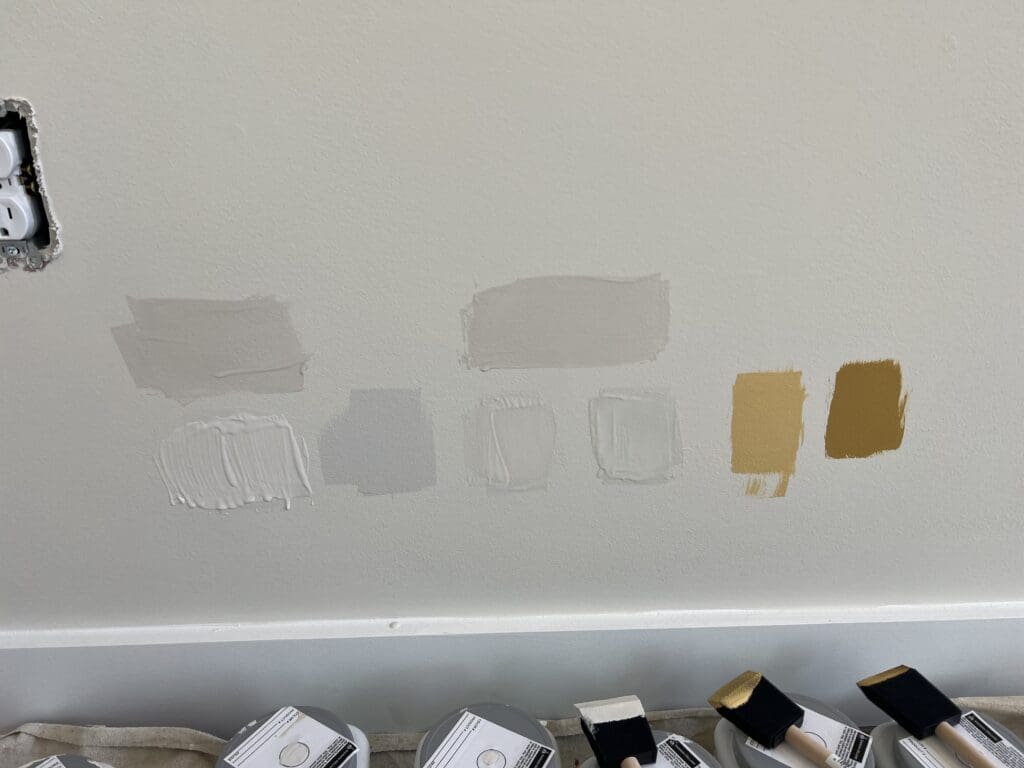What My Painting Debacle Can Teach You About Getting Your Marketing Right
I recently bought my dream home. And though I’ve owned in the past, I’d never done a single home improvement except to replace the hot water heater and air conditioning unit.
I don’t know if it’s my age or something about this house, but now I’m in full-on nesting mode. My rose bushes are blooming and my potted plants are thriving on the deck, thanks to the much-needed planting and pruning advice from mom and YouTube.
The stakes were higher when I decided to tackle interior painting—a more costly project with a potentially big impact. But I had no idea how to make the right decisions to get the best results. By the end of the project, I realized how badly I could have used a playbook.
That got me thinking about how business leaders must feel when they invest in strategic marketing. They know their growth goals depend on getting their marketing right. But marketing isn’t their core competency, so they’re not sure how to choose the right partner to achieve the best results.
When the Stakes are High, the Decisions are Critical
Most B2B leaders recognize that marketing is essential to driving revenue growth, whether it’s by attracting more prospects, closing more deals, upselling to existing customers, or reducing the customer churn rate. The stakes are especially high for growth-minded, private equity-backed companies. If the investor expects to drive substantial value over a five-year horizon but the marketing function is going nowhere fast, their investment is in trouble.
Any business with aggressive growth goals needs a partner that will develop and execute a strategic marketing plan that delivers strong results. But as marketing has become more tech-centric, data-driven, and specialized, it’s become too easy to misstep in the process. From not hiring the best marketing leader (whether an internal hire or a Fractional Chief Marketing Officer) or failing to leverage technology to optimize results, there are many decision points where it can all go wrong.
I made some major missteps with my interior painting project. And in retrospect it’s easy to see where I went wrong. But hindsight won’t change the bad outcome or get me back the time and money I wasted.



Lesson Learned, the Hard Way
My pre-school days aside, I had no experience with painting. I didn’t know about all the different paint types (flat, semi-gloss, gloss) and brands (from home improvement store staples like Sherwin Williams and Behr to the esteemed Farrow & Ball). I didn’t realize the samples would look so different from the swatches, or that the same paint color would look entirely different depending on the time of day.
For a business leader who isn’t a marketer, the choices are just as overwhelming. Marketers take many different forms: strategic vs tactical, specialist vs generalist, with many variations in each “bucket.” It’s difficult to look at a resume or LinkedIn profile, decipher the jargon, and know for sure that this professional has the expertise and capabilities to get the job done.
If you’re in an industry battling new entrants or the encroachment of AI, or you lead an investor-backed company that’s accountable to achieve fast growth, you can’t afford marketing delays or mistakes. Yet modern marketing is complex and multi-faceted. Like the right paint choice can transform a room, when marketing is done right it can transform your business by creating an effective funnel that generates predictable revenue. But it takes a combination of strategy, people, process, and technology to do it well.
Hiring the right partner is half the battle.
As I learned painfully. Halfway through the process I figured out my painters were likely generalist contractors who only dabble in painting. That showed in their work product and process: They didn’t use tape, so the wall paint bled onto my once-white ceiling and baseboard trim. They didn’t cover anything, so I now have taupe paint splatters on my sofa. They didn’t even use the right brushes, so now my walls look uneven and splotchy. Had I vetted them carefully, I might have avoided a lot of stress and the cost to redo the job.
Then again, it’s just paint. It’s not the end of the world.
Much like I didn’t know how to evaluate a painting contractor, most CEOs aren’t familiar with how to assess a marketing partner or which skillsets and capabilities to look for. Often, they discover they didn’t make the optimal choice after they’re far down the road—when they see that their marketing isn’t moving the needle. Sadly, the wrong choice results in real costs and opportunity costs—from the budget dollars wasted to the pipeline you didn’t build, the leads you didn’t attract, and the opportunities you didn’t nurture and close.
The thought of making the wrong marketing decisions can be paralyzing. But not making a decision is a choice to maintain the status quo. Which likely isn’t getting you where you need to go.
Avoiding the Marketing Decision Pitfalls
When it comes to marketing the stakes are too high not to follow a rigorous vetting process. We’ve found steps like these help business leaders find a marketing partner that generates the results they’re looking for.
- Think twice about online marketplaces. I used Thumbtack to find my painter to fast-track the process. But I probably placed too much faith in the reviews, not knowing whether they were legitimate. An online platform should never replace the due diligence required to choose an outsourced strategic marketing partner. These platforms make it easy to pick a freelancer and get started. But when you’re investing significant time and money in marketing, fast-and-easy isn’t the goal. You don’t want to hire a marketer who doesn’t have all the right skillsets, is stretched too thin to provide the attention you need, or is freelancing until they land a full-time role.
- Trust Google. The tried-and-true strategy of seeing who ranks in the top few spots (organically – not through paid ads) is still a good way to create a vendor shortlist. Outsourced marketing partners earn those rankings because they’re thought leaders who understand how marketing is evolving and what it takes to generate results.
- Study their content. Sure, you should read bios to get a sense of your marketing partner’s credentials and experience. But dig through their online content, too. You’ll learn a lot about how they approach marketing and the strategic thinking they’ll bring to your engagement.
- Schedule multiple calls. It will take a few conversations to get to know the people you’ll work with, the process they follow, and the kind of work they do. Ask them to showcase their past work, the strategies they’ve deployed, and the ROI they’ve generated.
- Learn about their model. Many B2B companies (especially high-growth businesses that need to scale fast) find the fractional marketing model appealing: You get precisely the slice of resources you need to staff your marketing without tying up a lot of overhead, leaving more funds for marketing execution. The fractional model also gives you the flexibility to tap different marketing skillsets as your needs and goals evolve.
- Ask probing questions. What qualities does the vendor feel you should look for in a marketing partner? How long have they been doing this type of work? If they claim to have experience in your industry, ask how many similar clients they’ve worked with. How will they protect your brand (much more important than my baseboards!) and help achieve your business objectives? And since we all make mistakes: What lessons have they learned and applied that make them better marketers?
- Talk to references. This is one area where I really failed with my painting project. If I’d talked with other customers I probably would have heard half-hearted comments that raised a red flag. (Surely I’m not the only one with splattered furniture or paint on the door handles.)
- Request a high-level approach. Don’t expect your outsourced marketing partner to lay out a detailed marketing plan before you’ve signed on. There’s too much work involved to get it right; and if they shortchange the due diligence process you’ll end up with poor results and a wasted budget. But DO expect your partner to outline their approach to developing and executing your strategic marketing plan, along with a high-level timeline and the key performance indicators (KPIs) they typically use to measure success.
When it comes to growing a B2B company the stakes are much higher than a bad paint job. If you’re ready to invest in strategic marketing as a growth-driver, take time to ensure you’re entrusting this important initiative to the right partner. You may be eager to move fast, but covering all the bases carefully is only way to choose an outsourced marketing partner that will do the one job you’re expecting: Drive revenue growth that helps your business thrive.
Schedule a call with Deb Andrews to learn how Marketri can develop a strategic marketing plan that drives predictable revenue for your business.





